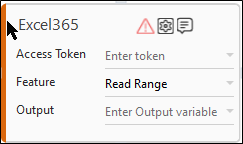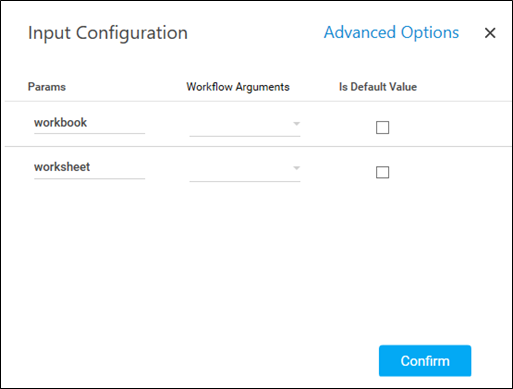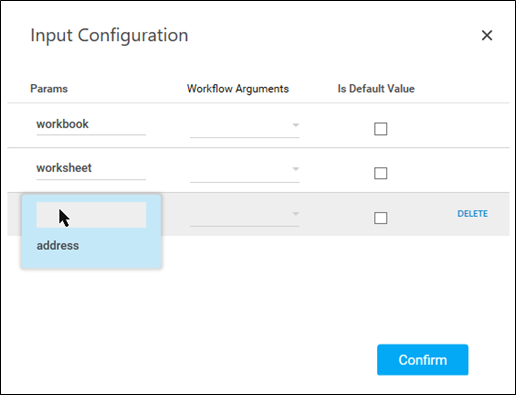Read range
Read Range feature enables you to read data from a given range when the range is mentioned explicitly else, reads the entire sheet. This is also applicable for tables as well.
Using Read Range feature
- Make sure the prerequisites for using Office 365 activities are met.
- In the Canvas Tools pane, click Office 365 Services to expand the tool and view the associated activities.
- Drag the Excel 365 activity inside the Office 365 Application Activity. Ensure that the output token of the OAuth process is passed on to the Excel activity for authentication. For more information, see OAuth Activity.
- The validation error symbol disappears when you select relevant values in the particular field from the available list. For example, Access Token, Read Range, and Output.

- The validation error symbol disappears when you select relevant values in the particular field from the available list. For example, Access Token, Read Range, and Output.
- In the Access Token list, select the output parameter holding the value of access token from the OAuth activity to pass in the Excel 365 activity. For more information, see OAuth activity.
- In the Feature list, select Read Range.
- Click the
 (Setting) icon to configure the input configuration. The Input Configuration screen appears.
(Setting) icon to configure the input configuration. The Input Configuration screen appears.


- Ensure to define all the input parameters as an in argument in the Parameter bar for selection in the mandatory and advanced options.
- Mandatory Options:
- In the workbook, select the parameter holding along with workbook name or name (if workbook is in root folder) of the workbook from which the data is to be read as per the given Office Excel365 range. For example, FolderName/WorkbookName.xlsx. Ensure to add the extension of excel while providing the name of workbook. i.e.xlsx.
- In the worksheet, select the parameter holding the name of the Excel sheet from which the data is to be read as per the given range.
- Advanced Options:
- In the address, select the parameter holding the excel range from which the data is to be read.
- Click Delete to remove the input parameter from the list.
- Mandatory Options:
- You can select the Is Default Value checkbox to set the selected input parameter as the default value.
- Once done, click Confirm.
- Click the
- In the Output list, select the argument which should store the result. The argument should be of Out Direction.
- Save the process.
- In the Tool bar, click Setup Environment.
- Once environment setup is completed perform the Test Run. The studio console will display the successful message with the required output else output will be blank.
- Output is of the format :
[
[
1,
3
],
[
2,
4
]
]
- Output is of the format :